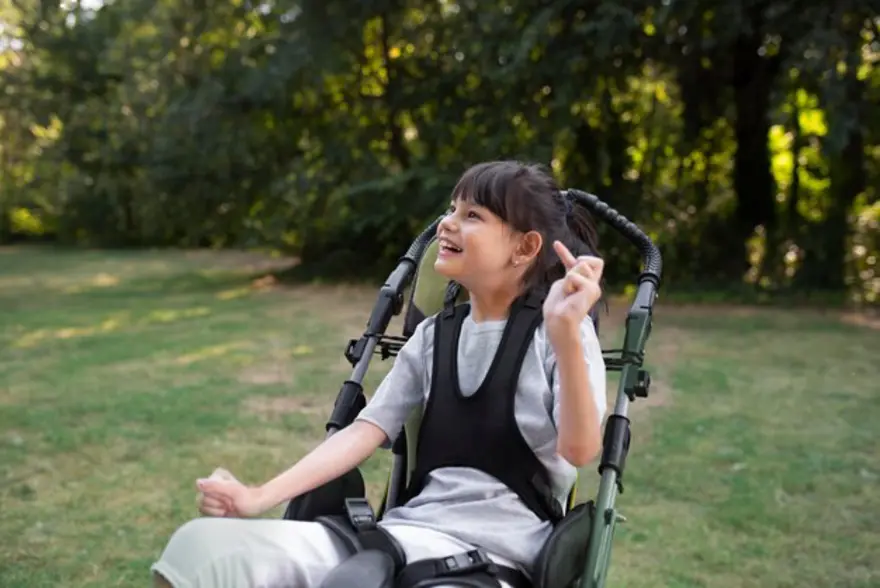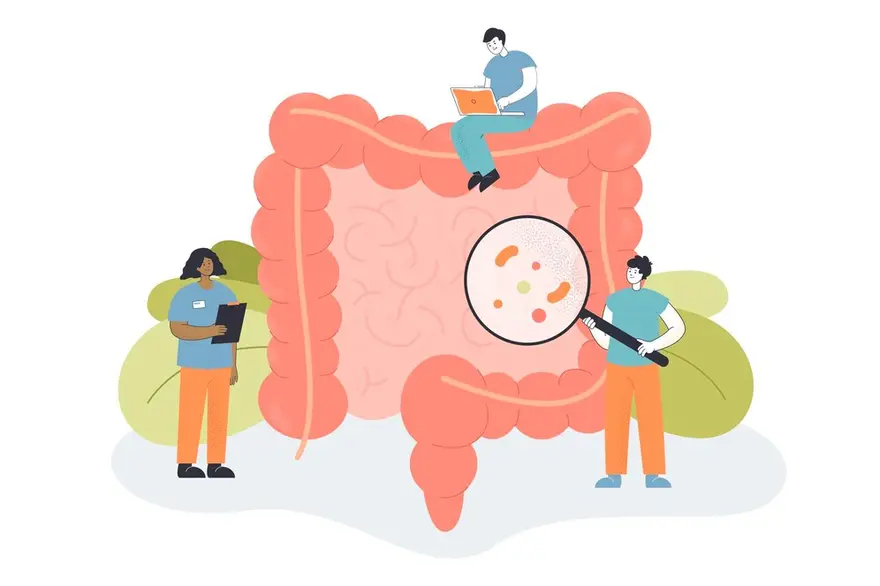Preventive Healthcare
Cerebral Palsy: Unveiling Symptoms, Types, Causes, and Effective Treatments
1583 Views
0

What is cerebral palsy?
Cerebral Palsy is a neurological disorder affecting movement and muscle coordination, typically arising during early childhood due to brain damage. This condition can result from prenatal or perinatal factors, impacting motor skills, posture, and sometimes cognitive functions. Cerebral Palsy symptoms vary widely, with individuals experiencing challenges ranging from mild to severe. Despite its non-curable nature, therapies, and support can enhance the quality of life of those who are suffering from CP.
What are the different types of cerebral palsy?
Cerebral Palsy is classified based on movement patterns and affected body parts. Different types of Cerebral Palsy are:
- Spastic Cerebral Palsy: It involves muscle stiffness, limiting fluid movement.
- Dyskinetic Cerebral Palsy: It is characterised by involuntary and uncontrollable movements.
- Ataxic Cerebral Palsy: It affects coordination and balance, resulting in shaky or unsteady movements.
- Mixed Types: It combines the characteristics of spastic, dyskinetic, or ataxic Cerebral Palsy.
How common is cerebral palsy?
Cerebral Palsy is not uncommon, affecting approximately 3 in 1000 children in India. Prevalence varies globally, influenced by factors such as birth complications and medical care access.
What are the symptoms of cerebral palsy?
Common cerebral Palsy symptoms include:
- Motor Skill Challenges: Difficulty with movements and coordination is a hallmark symptom, ranging from mild to severe depending on the type of cerebral palsy.
- Muscle Stiffness: Common is spastic cerebral palsy, muscles can be overly tight, impacting range of motion and causing awkward movements.
- Involuntary Movements: Dyskinetic CP involves uncontrollable and involuntary motions, affecting various body parts.
- Coordination Issues: Ataxic CP manifests as difficulties in balance and coordination leading to unsteady movements.
- Seizures: Epileptic seizures can co-occur with cerebral palsy.
- Vision and Hearing Impairments: Sensory issues may impact vision or hearing.
- Speech and Language Delays: Impaired muscle control can affect oral motor skills, leading to delays in speech and language development.
- Intellectual Disabilities: Some individuals with CP may experience intellectual challenges.
Cerebral Palsy symptoms manifest in various ways, with the severity determining the extent of impairment.
What causes cerebral palsy?
Cerebral Palsy results from brain damage or abnormal brain development, often occurring before or during birth, and can have multiple factors contributing to them. Genetic factors and maternal health conditions may also play a role in causing cerebral palsy.
Causes before and during birth
- Preterm (premature) birth.
- Congenital malformations due to disruptions in foetal brain development.
- Infections in the central nervous system (brain or spinal cord).
- Strokes affect the developing brain.
- Genetic issues affecting foetal development.
- Lack of blood flow or oxygen to the foetal brain.
- Kernicterus is brain damage from a toxic buildup of bilirubin, a chemical made in your liver.
- Meconium aspiration.
- Newborn hypoglycemia.
Causes after birth
Cerebral Palsy in infants can develop after birth due to other events such as related to injury, however, there are other possible cerebral palsy causes, too, including:
- Accidental injuries.
- Physical abuse.
- Asphyxiation.
- Infection, strokes, or bleeding in and around their brain.
- Jaundice and kernicterus.
What are the risk factors for cerebral palsy?
Various factors can contribute to cerebral palsy in adults or make it more likely to happen, including:
- Premature birth
- Low birth weight
- Multiple pregnancies
- Infection during pregnancy
- Maternal health issues such as thyroid disorders or seizures
What are the complications of cerebral palsy?
Cerebral palsy can lead to various complications, including difficulties in mobility, joint contractures, and challenges with daily activities. Some conditions that may be caused due to cerebral palsy are:
- Seizures and epilepsy.
- Intellectual disability.
- Conditions that affect your ability to communicate.
- Vision and hearing problems.
- Bone and muscle conditions.
- Feeding issues.
- Behaviour disorders.
How is cerebral palsy diagnosed?
Cerebral palsy diagnosis involves a comprehensive assessment of a child's motor skills, development, and medical history. Clinicians conduct physical exams, observe movements, and may use imaging, such as MRI or CT scans, to identify brain abnormalities. Developmental milestones such as crawling or walking delays, are considered.
Diagnostic criteria also involve ruling out other conditions. The process often includes input from multidisciplinary teams, including pediatricians, neurologists, and physical therapists. Early interventional services including developmental therapies, help manage the condition effectively and improve the quality of life for individuals with cerebral palsy.
What are the treatment options for cerebral palsy?
Cerebral palsy treatment depends on the severity and the type of cerebral palsy and may include a combination of therapeutic interventions and supportive measures.
Cerebral palsy treatment may include:
- Physical therapy focuses on improving muscle strength, coordination, and mobility.
- Occupational therapy aims to enhance daily living skills, while speech therapy addresses communication challenges.
- Cerebral palsy medications, such as muscle relaxants, or anti-seizure drugs, may prescribed by the healthcare professional to manage cerebral palsy symptoms.
- Orthopedic interventions, such as surgery or braces, address musculoskeletal issues like joint contractures, Assistive devices such as walkers or wheelchairs enhance mobility.
- Alternative Cerebral palsy treatment may include hippotherapy (horseback riding therapy) or aquatic therapy may complement conventional approaches.
In severe cases, surgical procedures such as selective dorsal rhizotomy or orthopedic surgeries may be suggested by healthcare professionals.
Can cerebral palsy be prevented?
While cerebral palsy is not entirely preventable, certain measures can reduce the risk. It includes:
- Prenatal Care: Adequate and timely prenatal care reduces the risk of complications during pregnancy.
- Healthy Lifestyle: Maintaining a healthy lifestyle during pregnancy, including proper nutrition and exercise, contributes to overall well-being.
- Avoidance of Harmful Substances: Pregnant women should abstain from consuming tobacco, alcohol, and illicit drugs.
- Birth Asphyxia Prevention: Monitoring and addressing potential oxygen deprivation during childbirth.
How long does cerebral palsy last?
Cerebral palsy is a permanent, lifelong condition with varying degrees of impact.
What is the long-term outlook for cerebral palsy?
The long-term outlook for cerebral palsy varies with the severity of the condition. When it is more severe, the outlook is less positive and may have a decreased life expectancy. With comprehensive care, therapies, and support, individuals can lead fulfilling lives. Early treatment improves outcomes, but challenges may persist, emphasising the importance of treatment strategies to enhance the quality of life.
How do I take care of myself?
To take care of yourself with cerebral palsy, prioritise medical check-ups, and adhere to prescribed therapies such as physical therapy, occupational therapy, and speech therapy that may help to help improve CP symptoms. To increase independent movements, mobility aids, and assistive devices can also be used. Maintain a balanced diet, and seek emotional support. Engage in activities that bring joy and focus on achievable goals, fostering overall well-being and independence.
Does cerebral palsy always affect intelligence?
No, cerebral palsy does not always affect intelligence. While some individuals may have intellectual disabilities, many with cerebral palsy have average or above-average intelligence as the condition primarily affects motor function.
Is cerebral palsy genetic?
Cerebral palsy is generally not considered as a genetic disorder. While some cases may have a genetic component, most result from factors like prenatal complications, birth injuries, or infections.
Can a person with cerebral palsy walk?
The ability to walk varies among individuals with cerebral palsy. Some may walk independently, while others might use mobility aids or wheelchairs. The level of mobility depends on the severity and the type of cerebral palsy.
Conclusion
In conclusion, the person suffering from cerebral palsy may face many challenges. Early intervention, personalised care, and ongoing support significantly enhance the lives of individuals with cerebral palsy. Understanding the cerebral palsy causes may help with the associated cerebral palsy treatment. While the condition's impact varies, proactive management and comprehensive cerebral palsy therapies empower those affected, underscoring the importance of understanding, empathy, and inclusivity in fostering a more accessible and supportive society.
If you are planning to get yourself tested, contact Metropolis Healthcare. We have a team of qualified blood collection technicians who can visit your home to collect blood samples, which are processed at advanced diagnostic labs.













1701259759.webp)









 WhatsApp
WhatsApp